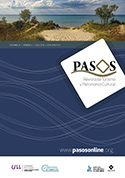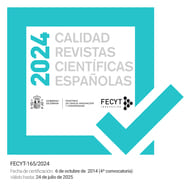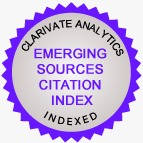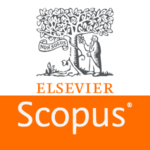Local population's perception of the impacts of tourism on the Magic Village of Tapalpa, Jalisco, Mexico
DOI:
https://doi.org/10.25145/j.pasos.2018.16.053Keywords:
perception, economic impact, environmental impact, sociocultural impactAbstract
Tourism has been and is the driving force behind development in many municipalities in Mexico, particularly in the network of so-called "Magic Towns" or Pueblos Mágicos. This is one of the most successful tourism programmes. This paper presents an analysis of the perception of the local population with respect to the impact of tourism on Tapalpa after its designation as "Pueblo Mágico". as reflected in a survey carried out on the general population. The survey was divided into six segments to measure both positive and negative impacts. The arithmetic mean value was calculated for each response to analyse the overall perception of the impact of tourism. The resulting mean comparison analysis shows that the residents do not differentiate between positive and negative impacts, since in all cases the mean is above three reflecting that the overall perception is both positive and negative., indicating that tourism is seen as a benefit and a danger at one and the same time.
Downloads
Publication Facts
Reviewer profiles N/A
Author statements
- Academic society
- PASOS. Revista de Turismo y Patrimonio Cultural
- Publisher
- Instituto Universitario de Investigación Social y Turismo. Universidad de La Laguna (España) - Instituto Universitario da Maia ISMAI (Portugal)
References
Aguiló, E. y Roselló, J. 2005. “Host community perceptions: A cluster analysis”, Annals of Tourism Research, 32: 925‑941.
Andereck, K., Valentine, K., Knopf, R. y Vogt, C. 2005. “Residents’ perceptions of community tourism impacts”, Annals of Tourism Research, 32: 1056‑1076.
Andriotis, K. y Vaughan, R. 2003. “Urban residents’ attitudes toward tourism development: The case of Crete”, Journal of Travel Research, 42: 172‑185.
Ávila, B. y Héctor, L. 2006. Introducción a la metodología de la investigación [en línea]. [fecha de consulta: 24 octubre 2015]. Disponible en:www.eumed.net/libros/2006c/203 ISBN 84‑690‑1999‑6.
Ayres, J. y Potter, H. 1989. “Attitudes towards community change: A comparison between rural leaders and residents”, Journal of the Community Development Society 20: 1‑18.
Botello, B., Heredia, M. y Moreno, R 1987. Memoria del municipio. Jalisco. UEND. México.
Broughan, J. E. y Butler, R. W. 1981. “A segmentation analysis of resident attitudes to the social impact of tourism”, Annals of Tourism Research, 8: 569‑590.
Brunt, P. y Courtney, P. 1999. “Host perceptions of sociocultural impacts”, Annals of Tourism Research, 26: 493‑515.
Chávez‑Dagostino, R.M., Maldonado, O.A., Ramos, K.J. y Espinoza, R. 2015. “¿Puede el turismo alternativo potenciar el desarrollo local en latino américa?”, Spanish Journal of Rural Development, Vol. VI (Special 1): 71‑82, 2015
Clancy, M. 2001. “Mexican Tourism: Export Growth and Structural Change since 1970”, Latin American Research Review, 36: 128‑150.
Clausen, B. H. 2007. Juntos pero no revueltos. Copenhagen Business School Press: Copenhagen.
Clausen B. H., Velázquez M. A. 2011. “En búsqueda del México auténtico. Las comunidades norteamericanas en ciudades turísticas de México”. En Tomás Mazón, Raquel Huete & Alejandro Mantecón (eds.) Construir una nueva vida. Los espacios del turismo y la migración residencial. Mil razones: Santander, 61‑80.
Craik, J. 1997. The Culture of Tourism, C. Rojek & J. Urry (eds), Touring Cultures: Transformation of Travel and Theory. Routlegade: London.
Cochran, W. G. 1977. Sampling Techiniques (3rd ed.). U.S.A.: John Wiley & Sons, Inc.
Dabat, A. 1994. México y la globalización. Centro de Investigaciones Multidisciplinarias, UNAM, México, Cuernavaca, Morelos.
Dogan, H. Z. 1989. “Forms of adjustment: Sociocultural impacts of tourism”, Annals of Tourism Research, 16: 216‑136.
Dyer, P., Gursoy, D., Sharma, B. y Carter, J. 2007. “Structural modeling of resident perceptions of tourism and associated development on the Sunshine Coast, Australia”, Tourism Management, 28: 409‑422.
Garduño‑Mendoza, M., Guzmán‑Hernández, C. y Zizumbo‑Villarreal, L. 2009. “Turismo rural: Participación de las comunidades y programas federales”, El Periplo Sustentable, 17: 5‑30.
Figuerola, M. 2005. Turismo y desarrollo regional: Hacia una perspectiva multidisciplinaria. Trabajo presentado en el VII Congreso Nacional de Investigación Turística. Universidad de Guadalajara. México. Disponible en: http://www.sectur.gob.mx/work/sites/sectur/resources/LocalContent/13580/3/Presentacion_ManuelF. pdf>. Consultado el 10 de noviembre de 2015.
Fox, R. 2001. “Constructivism Examined”, Oxford Review of Education, 27: 23‑35.
Fredline, E. y Faulkner, B. 2007. “Host community reactions: A cluster analysis”, Annals of Tourism Research, 27: 763‑784.
Gu, M. y Wong, P. P. 2006. “Residents’ perception of tourism impacts: A case study of homestay operators in Dachangshan
Dao, North‑East China”, Tourism Geographies, 8: 253‑273.
Hall, M. y Lew, A. 2009. Understanding and managing tourism impacts: An integrated approach, Londres: Routledge. 392 p.
Hall, M. 2008. Tourism planning: Policies, processes and relationships, Essex: Pearson. 236 p.
Hernández, S. R., Fernández, C. C. y Batista, L. P. 2003. Metodología de la Investigación, México: McGraw Hill.
Hieranaux, D. 2005. “Imaginarios y lugares en la reconquista de los centros históricos”, Ciudades, RNIU, 65: 15‑21.
INEGI 2010. Censo de Población y Vivienda. Instituto Nacional de Estadística y Geografía, México.
Ingram, H., Schneider, A. L. y Deleon, P. 2007. Social construction and policy design. En Sabatier, P.A. (ed.) Theories of the Policy Process. Westview. University of California: Davis, 93‑128.
Jacobs, C. 2001. “Folk for Whom? Tourist Guidebooks, Local Color, and the Spiritual Churches of New Orleans”, The Journal of American Folklore, 114: 309‑330.
Lankford, S. & Howard, D. 1994. “Developing a tourism impact attitude scale”, Annals of Tourism Research, 21: 121‑139.
Lepp, A. 2007. “Residents’ attitudes towards tourism in Bigodi village, Uganda” Tourism Management, 28: 876‑885.
Meyer, D. 2004. Economía turística en América Latina y el Caribe. Bogotá: Ed. Universidad Externado de Colombia, Facultad de Administración de Empresas Turísticas y Hoteleras.
OCDE 2012. Tourism Trends and Policies 2012. OECD. European Union.
Pine, J. y Gilmore, J. 1999. The Experience Economy. Harvard Business School Press: Boston.
Richards, G. y Hall, D. 2000. The community: A sustainable concept in tourism development. En: Dereck Hall y Greg Richards (Eds.): Tourism and sustainable community development, Londres: Routledge. pp.1‑13.
Ryan, C. 2003. Recreational tourism: Demands and impacts, Clevedon: Channel View Publications. 358 p.
Secretaría de Turismo 2012. Inversión Federal en el Programa Pueblos Mágicos 2001‑ 2012. Gobierno Federal.
Spanou, E. 2007. “The impact of tourism on the sociocultural structure of Cyprus”, Tourismos: An International Multidisciplinary Journal of Tourism, 2: 145‑162.
Wall, G. y Mathieson, A. 2006. Tourism: Change, impacts and opportunities, Essex: Pearson Prentice Hall. 412 p.
Downloads
Published
How to Cite
Issue
Section
License
I confirm that the work is original (of my/our authorship), and that it will not be submitted to other journals or publications until the final resolution of the review process in PASOS, RTPC.
I authorize the publication of my work by PASOS, PSTN of free and open access in any of the formats that I deem appropriate, for an indefinite period of time and as a non-remunerated collaboration.
Likewise, the author(s) understands that the published work may be linked or deposited on any server or included in other publications (republication), provided that the new place and/or new edition references the original publication and acknowledges the authorship and copyright ownership of PASOS RTPC publications.
Authors understand that a plagiarism-self-plagiarism check will be performed, and the article may be removed at any time from the editorial flow.










